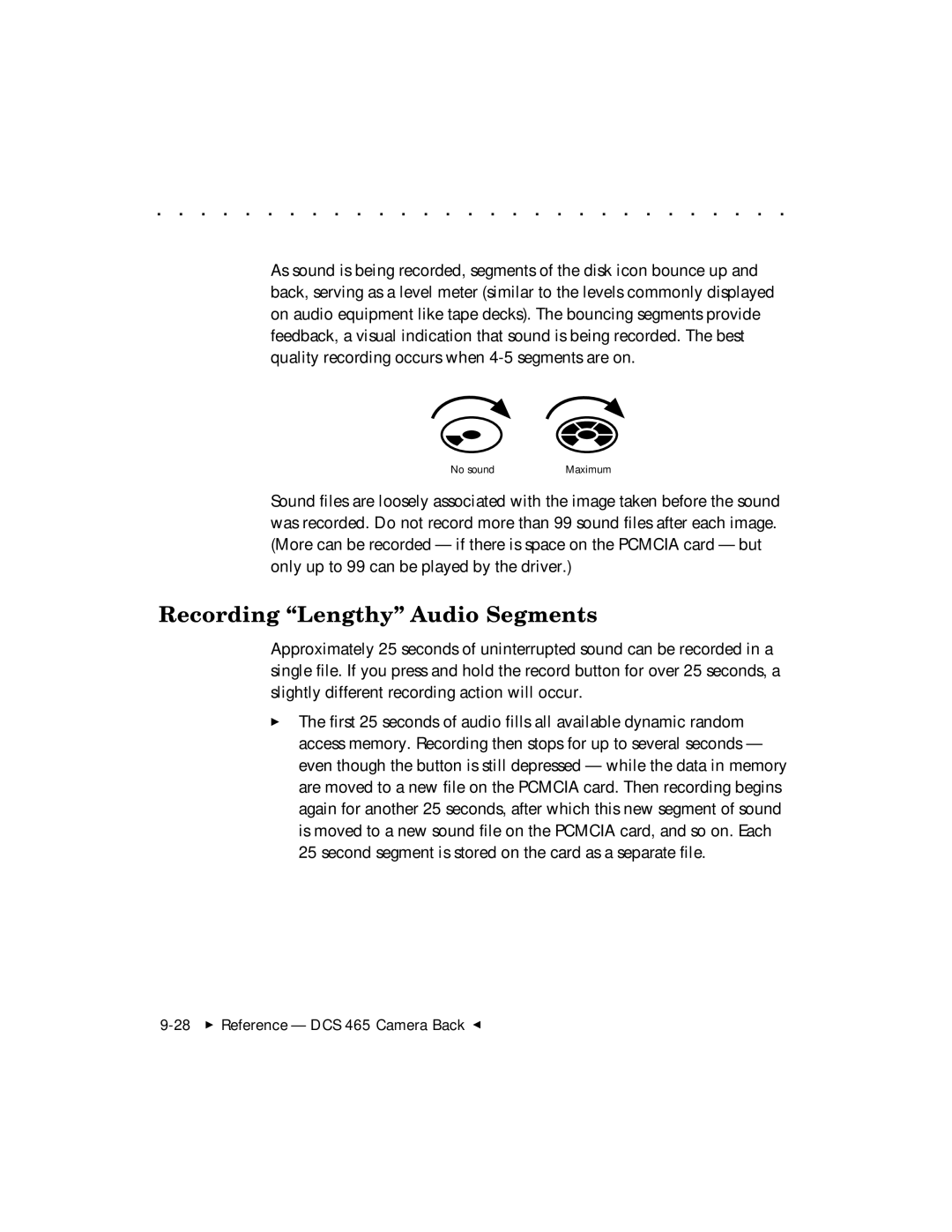. . . . . . . . . . . . . . . . . . . . . . . . . . . . .
As sound is being recorded, segments of the disk icon bounce up and back, serving as a level meter (similar to the levels commonly displayed on audio equipment like tape decks). The bouncing segments provide feedback, a visual indication that sound is being recorded. The best quality recording occurs when
No sound | Maximum |
Sound files are loosely associated with the image taken before the sound was recorded. Do not record more than 99 sound files after each image. (More can be recorded — if there is space on the PCMCIA card — but only up to 99 can be played by the driver.)
Recording “Lengthy” Audio Segments
Approximately 25 seconds of uninterrupted sound can be recorded in a single file. If you press and hold the record button for over 25 seconds, a slightly different recording action will occur.
The first 25 seconds of audio fills all available dynamic random access memory. Recording then stops for up to several seconds — even though the button is still depressed — while the data in memory are moved to a new file on the PCMCIA card. Then recording begins again for another 25 seconds, after which this new segment of sound is moved to a new sound file on the PCMCIA card, and so on. Each 25 second segment is stored on the card as a separate file.
